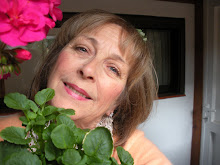Traditional Chinese
Medicine dates back over 5,000 years and includes an extensive range of
medical practices.
Living in harmony
with all things is important in the Chinese approach to health and wellness.
Yin and Yang
Yin Yang Symbol
The theory behind yin
and yang states that wholeness is composed of the union of opposites. They are
complementary and interdependent. Nothing is either all yin or all yang.
Look at the
illustration of yin and yang. Each is an inseparable part of the whole, while
each contains part of the other.
Yin is categorized
as: passive, feminine, dark, still, negative, night, moon, intuitive, cold,
contemplative, soft, left, back.
Yang is categorized
as: active, masculine, light, movement, positive, day, sun, logical, hot,
action, hard, right, front.
Zang-fu (Organs)
These are the organs
of the body according to Traditional Chinese Medicine. Zang are the solid
organs or viscera of the body that are yin in nature: Heart, Spleen, Lungs,
Liver Kidneys, and Pericardium. Fu are the hollow organs that are yang in
nature: Small Intestine, Stomach, Large Intestine, Urinary Bladder, Gall
Bladder, and San Jiao.
Together they form a
Zang Fu pair. Each pair is connected via channels internally and externally
together. This can have therapeutic importance in that a point on the fu
channel may be used to treat a problem on its connected zang channel, and vice
versa. They are also associated with the five element model.
Their functions
had little to do with what we now understand of their physiology. As well as
physical functions, these organs are linked to emotional and spiritual factors.
The Meridians
Anterior view of the Meridians
Posterior view of the Meridians
The meridians are a
complex web of pathways that are unique and central to Traditional Chinese
Medicine. These channels are
linked to a specific organ or organ system making the organism a unified whole. They serve as lines
of communication among the organs and the body, provide adjustments to the ebb and flow
of vital energy in the body, help maintain a balance of yin and yang, and
provide warmth and nourishment for the whole body.
The twelve standard
meridians run on the surface of the body. In addition to the major meridians
there are eight extraordinary channels, called vessels.





No comments:
Post a Comment